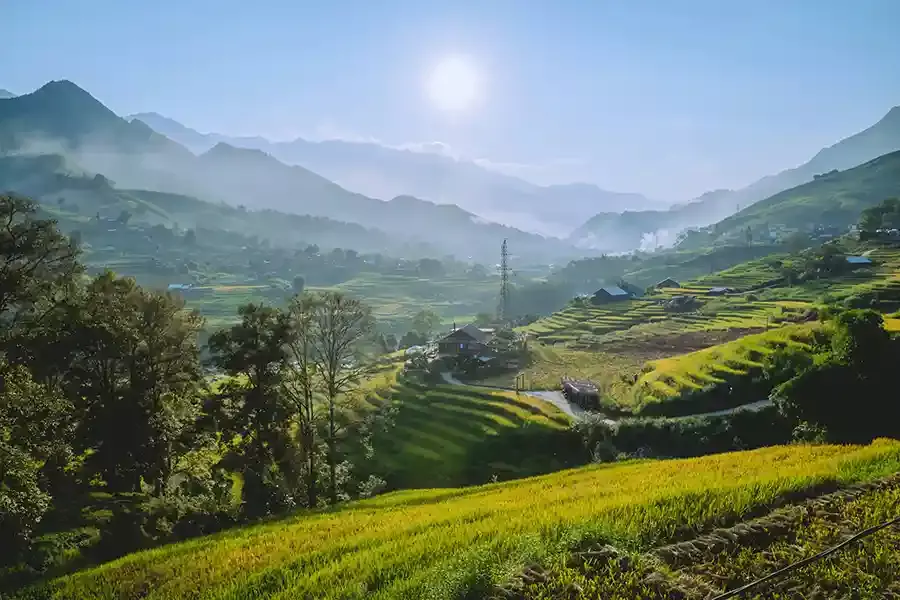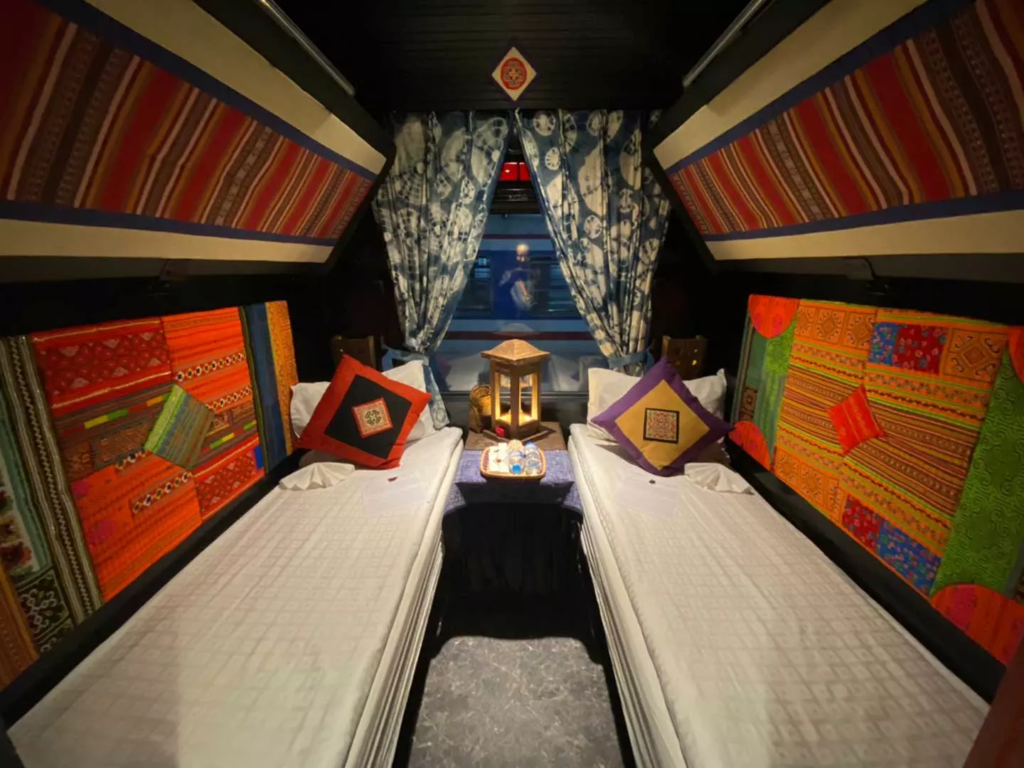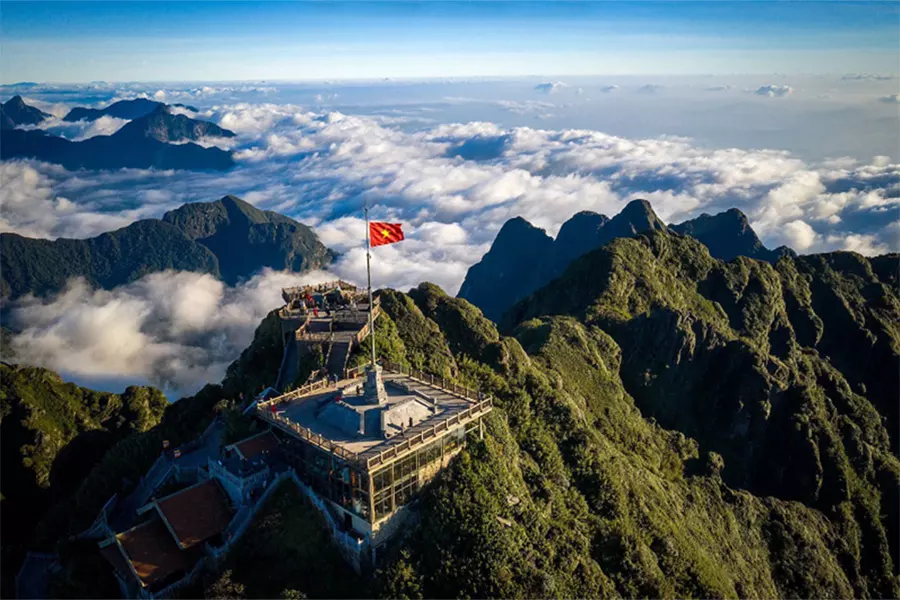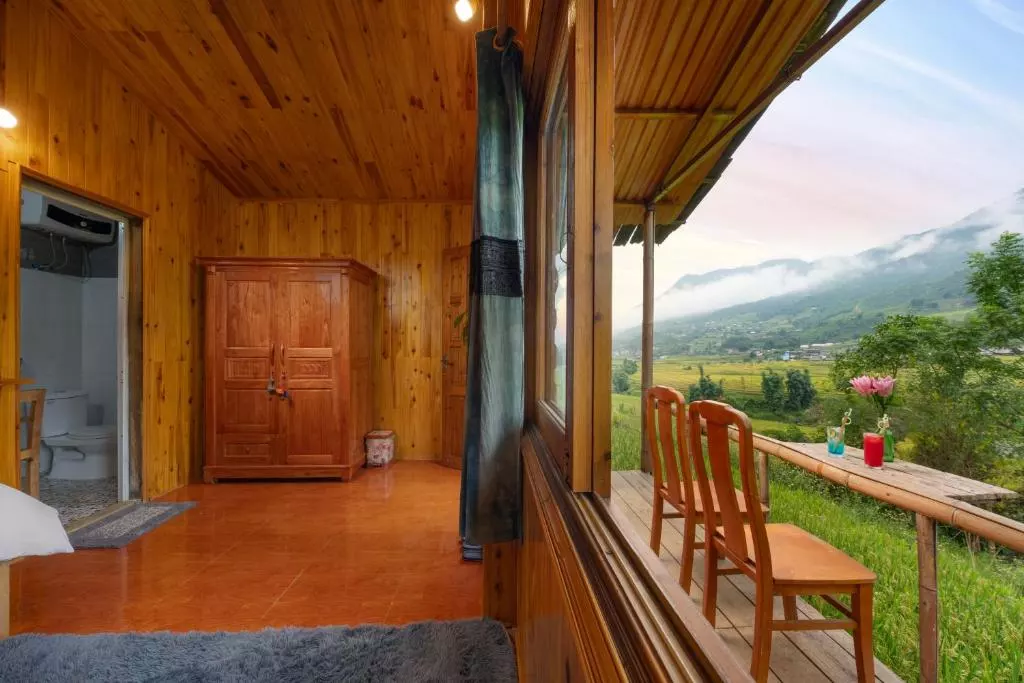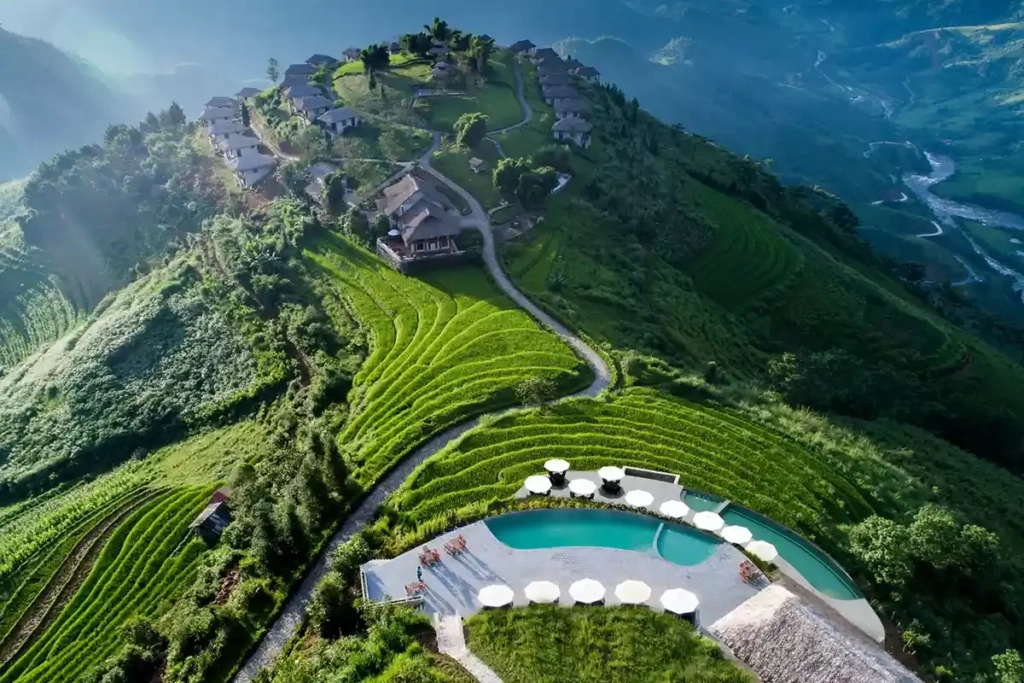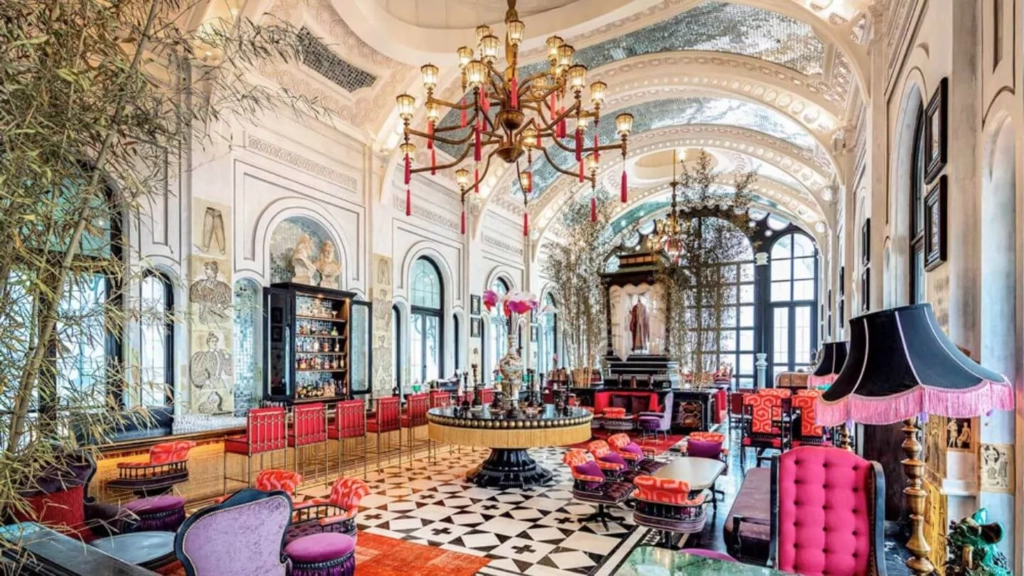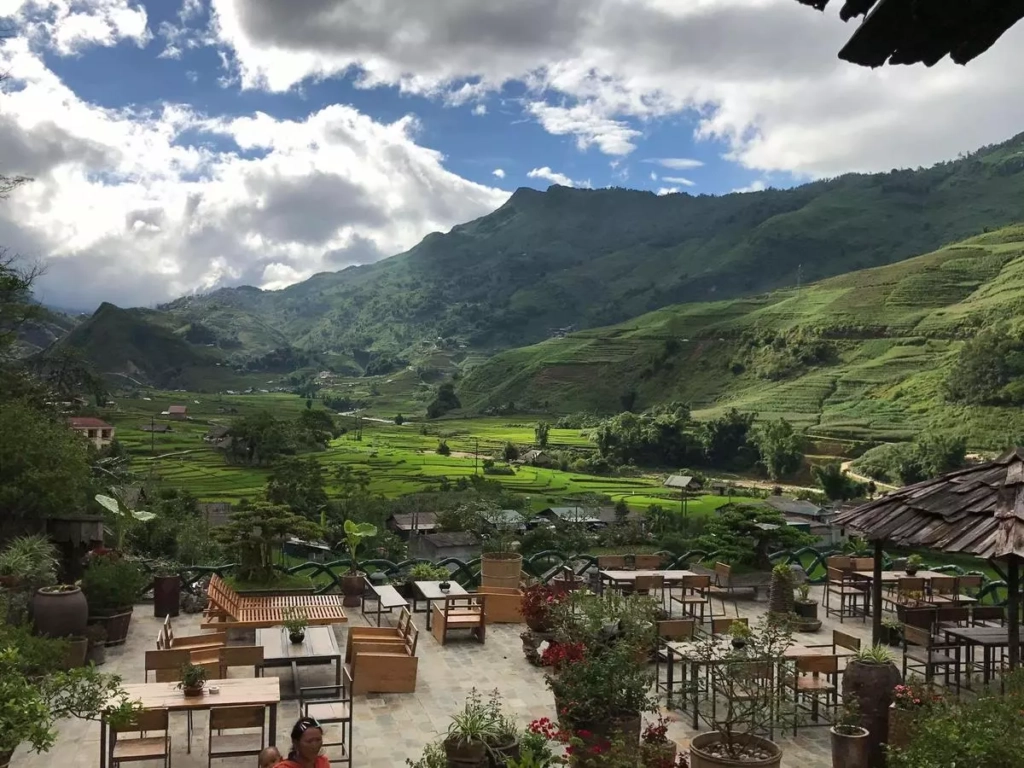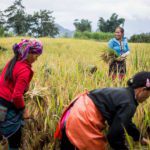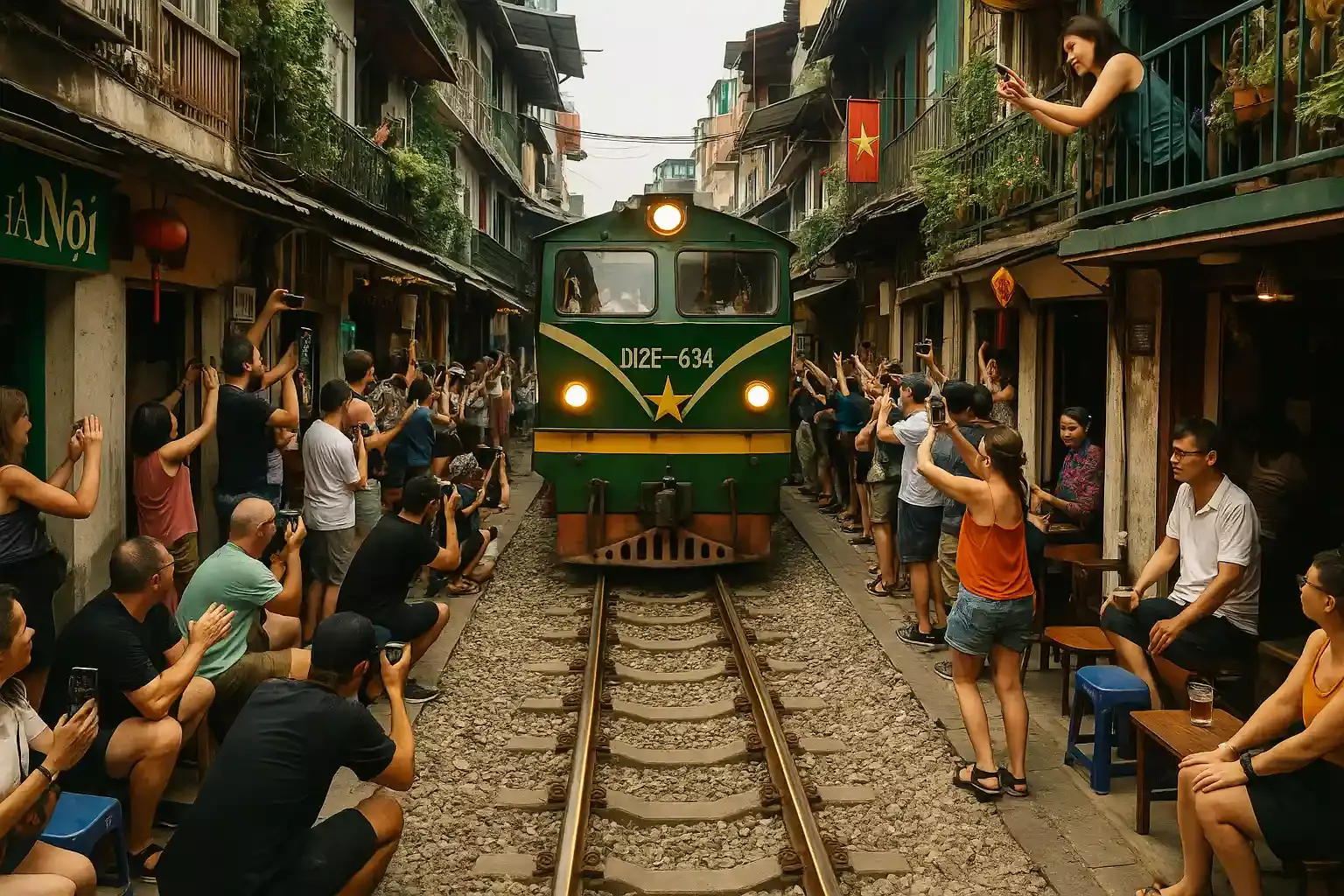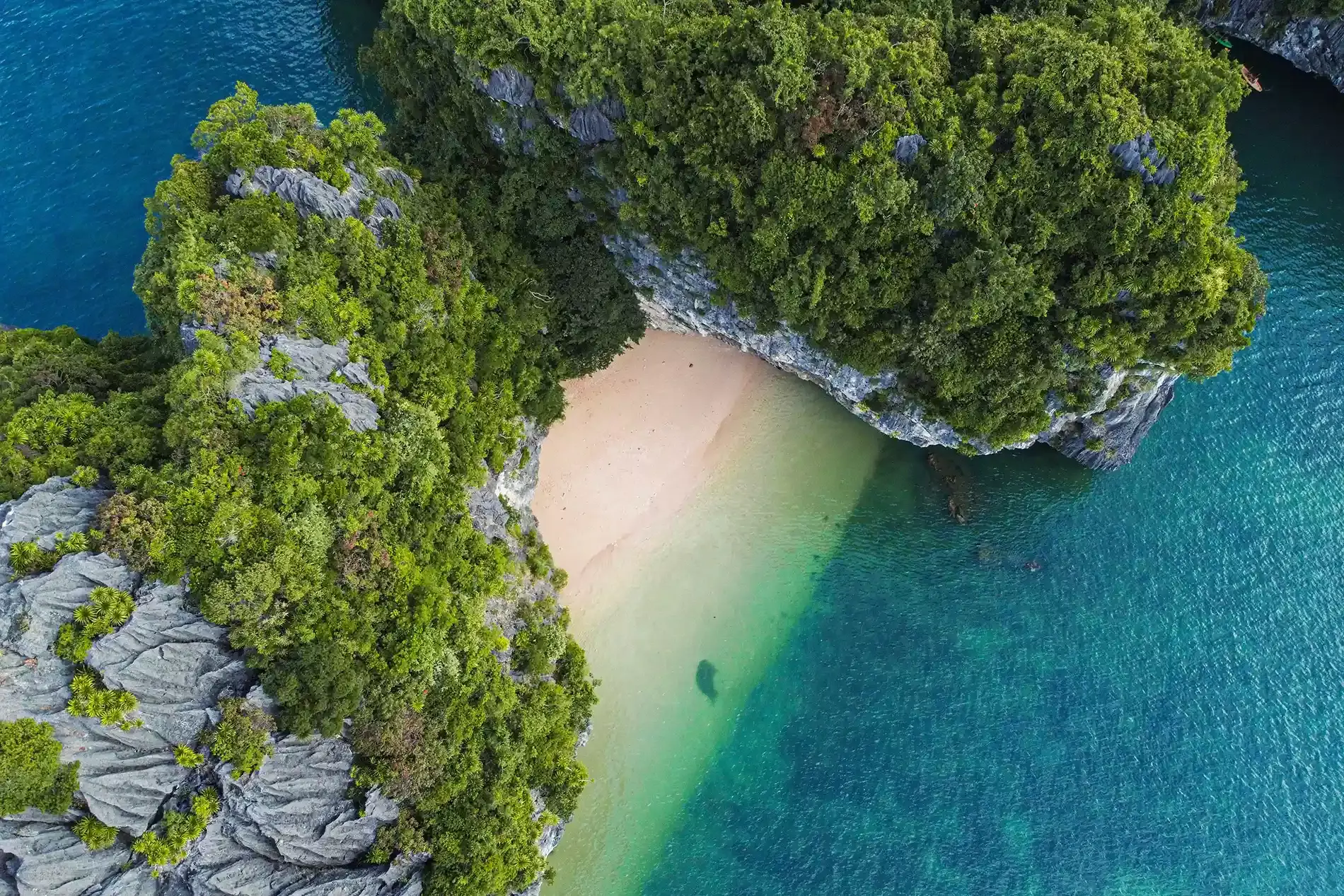
Sapa in Vietnam: What to See, When to Go & Our Best Itineraries
Yes, Sapa is a tourist destination — but don’t cross it off your itinerary too quickly. Its landscapes are still absolutely breathtaking: terraced rice fields carved into the mountainsides, misty valleys at dawn, lush green peaks, and villages nestled deep in the hills. This majestic nature truly deserves to be discovered, even if it draws many travelers.
With a bit of planning, it’s entirely possible to enjoy it to the fullest. Choosing the right time to go, traveling with one of our experienced French-speaking guides, following a route that avoids the crowds, staying in a local homestay… all are great ways to escape the tourist trails while enjoying an authentic experience.
In this article, we give you all the keys to prepare your stay in Sapa: climate, best times to visit, must-do hikes, villages to explore, suggested itineraries, practical tips, and recommended addresses. In other words, a complete guide to discovering Sapa differently — and peacefully.
Table des matières de l'article
Where is Sapa, and why should you go?
A former colonial hill station
Sapa is located in Lào Cai province, in the northwest of Vietnam, about 300 kilometers from Hanoi. Perched at an altitude of 1,500 meters, the town was developed by the French at the end of the 19th century as a hill station. They appreciated its cooler climate—especially pleasant in summer—and its mountainous setting, ideal for relaxation. Even today, the elevation allows for milder temperatures than elsewhere in the country, particularly during the hotter months.
Although most traces of the colonial presence have disappeared, Sapa still serves as a “mountain refuge” and continues to attract travelers seeking cooler air, natural beauty, and peace.
A cultural crossroads of ethnic minorities
Sapa is also a meeting point for several ethnic minority groups who live in the surrounding villages. Hmong, Red Dao, Tay, Giay, and Xa Pho — each of these communities has its own language, traditional dress, farming practices, and customs.
It’s one of the rare places in Vietnam where such cultural diversity can be observed within a relatively small area. By staying in local villages or hiking with a local guide, visitors can experience ways of life that are still deeply rooted in tradition, yet constantly evolving. It’s also an opportunity for genuine human exchanges, far from tourist clichés.
Breathtaking terraced rice fields
One of Sapa’s main attractions is, without a doubt, its scenery. The terraced rice fields, carved into the mountainsides over generations, create a striking visual landscape. They change appearance with the seasons: flooded at the start of summer, lush green in July and August, and golden just before harvest time. Combined with misty mountains, forests, and deep valleys, they offer panoramas that are both powerful and serene.
These landscapes are best discovered on foot, through hikes ranging from a few hours to several days. Some trails are very popular, others much less so. That’s why choosing the right itinerary makes all the difference in fully appreciating the natural beauty of the region.
Aerial view of the beautiful rice fields of Sapa
What is the best time to visit Sapa?
Sapa can be visited year-round, but the mountain climate is highly unpredictable, and some seasons require extra attention. Here’s a clear overview of seasonal conditions to help you plan your stay.
Spring (March – May): Cool weather and blooming landscapes
Spring is a pleasant season to explore Sapa. After the fog and rain of late winter, the skies begin to clear and temperatures become milder, typically ranging from 15°C to 25°C. It’s also when vegetation starts to return, with early blooms appearing in the valleys and on the hillsides. Trails are accessible, village life is active, and tourist crowds are still moderate. It’s a great time for peaceful hikes and immersive stays.
Summer (June – August): Warm temperatures and lush greenery
Summer is the hottest season in Sapa, with temperatures reaching up to 30°C, especially in the valleys. It’s also the rainy season, bringing frequent and sometimes intense showers. The landscapes are a vibrant green: rice paddies filled with water and mountains covered in dense vegetation. However, this season also carries the risk of landslides or mudslides, particularly on small paths or in remote areas. Some hikes may be impassable, so it’s essential to check with our agency about current trail conditions. For flexible travelers, it’s a spectacular time to visit—provided you’re well prepared.
Autumn (September – November): Harvest time and clear skies
Autumn is arguably the most popular time to visit Sapa. Rainfall decreases, skies clear up, and temperatures remain mild. It’s also the rice harvest season, with stunning golden landscapes. September, in particular, draws many photographers eager to capture the terraced fields at their most beautiful. October and November offer stable weather, perfect for multi-day treks. However, this is also one of the busiest times for tourism, so booking accommodation in advance is highly recommended.
Sapa landscape before harvest
Winter (December – February): Dry, cold, and mystical
Winter is the coldest season in Sapa. Temperatures can drop below 10°C, and it’s not uncommon to see frost — or even a dusting of snow on the mountain peaks in January. The weather is generally dry but cold, with often clear skies. The atmosphere is quite special, almost mystical, especially in the early mornings, with low-lying mist and a striking sense of stillness. Trails remain accessible, but you’ll need to dress warmly, especially at night. This is a great season for those who enjoy mountain moods and solitude, far from the crowds.
How to get to Sapa from Hanoi?
Located over 300 kilometers from the capital, Sapa is not yet accessible by plane from Hanoi (an airport is currently under construction) . Therefore, traveling by land is the best option, with several possibilities depending on your comfort level, budget, and available time.
By overnight train + transfer
This is the most classic and scenic option. The overnight train connects Hanoi to Lao Cai, the nearest station to Sapa. The journey takes about 8 hours, with evening departures and early morning arrivals. Various comfort classes are available, but for travelers seeking a decent level of comfort, we recommend air-conditioned cabins with soft sleepers (4 berths per compartment).
From Lao Cai station, it takes about 1 hour by road to reach Sapa (by minibus, taxi, or private vehicle). This option is ideal for those looking to enjoy an authentic travel experience while making the most of their time.
The sleeper cabin in a Chapa Express train car
By bus or minivan
Buses and minivans offer a more direct option, connecting Hanoi to Sapa in 6 to 7 hours without transfers. Several companies operate daily departures from downtown Hanoi or the airport. There are sleeper buses with reclining seats or bunks — some of them quite comfortable, especially for overnight departures.
This option is often more affordable than the train and works well for travelers in a hurry or those wishing to avoid the transfer at Lao Cai. However, the road can be winding, especially as you approach Sapa, which may be uncomfortable for those prone to motion sickness.
By private car with driver
For maximum comfort and flexibility, a private car with driver is an excellent option. The journey takes about 5.5 to 6 hours, depending on traffic conditions. You can depart at the time of your choosing and stop along the way whenever you like.
This is also a great choice if you’re traveling as a group, with family, or with lots of luggage. While more expensive, the comfort and personalized service may be well worth it — especially if Sapa is part of a longer trip through Northern Vietnam.
What to do and see in Sapa?
Sapa captivates not only with the diversity of its landscapes but also with the richness of the activities it offers. Between hiking, village visits, local markets, and mountain peaks, there’s something for every traveler — whether you’re seeking nature, cultural encounters, or physical challenge.
Hike through the Muong Hoa Valley
Muong Hoa Valley is one of Sapa’s natural gems. Stretching southeast of the town, it offers spectacular views of terraced rice fields, interspersed with streams, forests, and villages. It’s the starting point for many hikes, easily done with a local guide, ranging from a half-day to several days. The valley is also known for its engraved stones featuring mysterious patterns — archaeological remnants that remain unexplained.
Hiking here is a true immersion: you walk through the fields, encounter locals at work, and witness a lifestyle still deeply rooted in agriculture and community. It’s the perfect gateway to discover the region at a slower, more meaningful pace.
Visit the villages of Ta Van, Lao Chai, and Y Linh Ho
The valley’s villages are home to various ethnic minority groups, especially the Black Hmong and Red Dao. Among the most well-known, Ta Van, Lao Chai, and Y Linh Ho allow visitors to observe traditional architecture, local crafts, and daily rituals. Staying with a host family provides a more direct and personal connection, far from overly commercialized tourist routes.
Cat Cat village, often mentioned in tourist guides, is much more visited. Although it’s easily accessible from downtown Sapa, it has the feel of a “staged folklore” attraction, with artificial installations, standardized shops, and photo opportunities designed for tourists. While it may appeal to some casual visitors, we recommend exploring the more remote villages, where the hospitality is more genuine and daily life remains more authentic.
Climb Fansipan, the Roof of Indochina
Rising to 3,143 meters, Mount Fansipan is the highest peak in Vietnam — and in all of Indochina. It is now accessible by cable car from Sapa in about 20 minutes, making it possible for everyone to enjoy the experience, even without any special physical condition. At the summit, the view is breathtaking on a clear day, and the infrastructure (pagodas, viewing platforms, sculptures) offers a curious blend of spirituality and modernity.
For the more adventurous, hiking to the top is still an option, but it requires good preparation and at least two days of trekking with an overnight stay in a tent. A great challenge for experienced hikers.
Aerial view of the top of Fansipan mountain
Stroll through Sapa’s market and its surroundings
Sapa’s market remains a lively place, even though it has changed over the years with the rise in tourism. You’ll find local handicrafts (embroidered fabrics, silver jewelry), fresh produce, and mountain specialties. It’s also a great place to observe the traditional clothing of Hmong and Dao women, who still come to sell their goods.
For a more authentic atmosphere, the weekly markets in nearby villages — such as Bac Ha or Coc Ly, a few hours away by road — are well worth the trip. These markets are mainly frequented by locals and offer a raw, unfiltered glimpse into rural trade and ethnic exchanges.
Our Recommended 3-Day Itinerary to Discover Sapa
Day 1: From Hanoi to the Valleys of Suoi Ho
Your adventure begins at 6:30 AM with pickup from your hotel in Hanoi’s Old Quarter. The shared shuttle to Sapa (departure at 7:00 AM) is already an experience in itself, gradually revealing the mountainous landscapes of Northern Vietnam.
You’ll arrive in Sapa around 1:30 PM, where you’ll be welcomed by your local guide — a true bridge between your world and that of the ethnic minorities. You’ll head straight to the Suoi Ho Valley, a lush, relatively flat area that provides a perfect introduction to the region’s natural beauty.
This first hike, designed to be accessible, allows you to enjoy the stunning scenery without too much physical effort — ideal for acclimating to the altitude and mountainous environment. The terraced rice fields unfold before you like a natural amphitheater sculpted by generations of farmers.
The day ends with a special moment: dinner and overnight stay in a homestay hosted by a Dao family. This first immersion into local culture instantly transforms your travel experience. The shared conversations, everyday gestures observed, and the sincere hospitality of your hosts create an authentic connection that goes far beyond the usual tourist experience.
Day 2: Ascent to Hang Da and Exploration of the Muong Hoa Valley
Day 3: Hidden Waterfall and Return to Sapa
Your final day in the mountains begins with a hike through lush rice fields, revealing their full morning splendor. The dew on young rice shoots, the interplay of light and mist, and the precise movements of farmers at work create a living scene of striking beauty.
A visit to a hidden waterfall provides a refreshing break in your journey. Weather permitting, you may even enjoy a swim — a welcome moment of relaxation after the effort of hiking. Tucked away in a lush green setting, this waterfall perfectly illustrates the unspoiled nature of this exceptional region.
The visit to Giang Ta Chai village offers a fascinating glimpse into living anthropology. This unique village, where three different ethnic groups — Dzay, Hmong, and Dao — coexist, is a vivid example of Sapa’s rich multiculturalism. Observing the interactions between communities, their distinct clothing styles, and their specific traditions greatly deepens your understanding of this complex region.
A picnic lunch in Su Pan symbolically marks the end of your mountain immersion. The walk to Thanh Kim village offers a gentle transition back to civilization.
The return to Sapa by private car (departure at 2:30 PM for Hanoi) gives you one last chance to take in the landscapes that have left such a mark on your journey, before arriving back in the vibrant Vietnamese capital around 9:00 PM.
Our Recommended Accommodations in Sapa
Here is a selection of accommodations in Sapa, categorized by type and price range, to help you choose according to your preferences and budget.
En maison d’hôtes
Homestays
Staying with a local family is an excellent way to experience the local culture and enjoy the hospitality of ethnic minorities. These accommodations offer a true immersion into the daily life of the villages surrounding Sapa.
Surelee Homestay
Located away from the hustle and bustle of Sapa, this homestay offers guided hikes and a friendly, welcoming atmosphere.
Price: around €10 per night
DE MONG SAPA
Set in a peaceful location, this homestay is highly rated for its warm hospitality and breathtaking mountain views.
Price: from €25 per night
SaPa Farmer House
This guesthouse offers comfortable rooms with private balconies, delicious local cuisine, and trekking activities organized by the host family.
Price: from €65 per night
Bedrooms with balcony at Sapa Farmer house
Ecolodges with Views of the Rice Terraces
For those seeking both comfort and nature, ecolodges offer eco-friendly accommodations with spectacular views over the terraced rice fields.
Sapaxa Spring Garden Ecolodge
Offering comfortable rooms with private balconies, this ecolodge is appreciated for its peaceful location and generous breakfast.
Price: from €30–40 per night
Laxsik Ecolodge
Located near the Muong Hoa Valley, this property features bungalows with mountain views, an outdoor pool, and a restaurant serving local dishes.
Price: from €100–150 per night
Topas Ecolodge
Perched on a hilltop, this upscale lodge offers private bungalows with panoramic views, an on-site restaurant, and activities such as cycling and hiking.
Price: around €200 per night
Aerial view of Topas Ecolodge
Hotels in Sapa Town Center
For added convenience, staying in the center of Sapa offers easy access to restaurants, markets, and other attractions.
Eden Boutique Hotel & Spa
This property combines modern comfort with a relaxing spa — perfect for unwinding after a day of hiking.
Price: from €30–40 per night
Sapa Horizon Hotel
Just a few steps from Sapa Market, this hotel offers comfortable rooms with mountain views and attentive service.
Price: around €50 per night
Hotel de la Coupole – MGallery
A luxury hotel inspired by French Indochine design, featuring high-end amenities including an indoor pool and a spa.
Price: from €120 per night
Hall of Hotel de la Coupole – MGallery
Where to Eat and Have a Drink in Sapa
Sapa offers no shortage of great spots to enjoy a good meal or relax after a day of hiking. From mountain specialties to cozy cafés and more traditional restaurants, there’s something for everyone.
Try a Local Barbecue in the Evening
At the end of the day, the town comes alive around small open-air barbecue stands. Skewers of meat, grilled vegetables, roasted corn, smoked tofu — everything is cooked on the spot and served with homemade sauces. These casual meals are popular with both locals and travelers, and all for a very reasonable price.
Tip: try the stalls around Sapa’s night market, often open until 10:00 PM.
Take a Break at Dao Spa & Coffee House
Located away from the bustle of the town center, La Dao Spa & Coffee House is a special place — perfect for unwinding after a hike or simply enjoying a peaceful moment. Run by the local Dao community, this small establishment offers traditional herbal treatments in a warm and respectful setting that honors ancestral knowledge.
The adjacent café, perched above the terraced rice fields, offers stunning views over the Ta Van Valley — the perfect spot to sip a ginger tea or Vietnamese coffee while taking in the surrounding mountains.
La Dao Spa Caffe with the beautiful view
Taste the Local Specialties
Don’t miss these regional dishes:
- Thang Co – A traditional horse or buffalo stew (strong flavor, for the curious)
- Lẩu cá hồi / cá tầm – Salmon or sturgeon hotpot, a mountain specialty
- Cơm lam – Sticky rice cooked in bamboo
Recommended places:
- A Phủ Restaurant – Rustic atmosphere, traditional dishes, reasonable price
- Moment Romantic Restaurant – Local cuisine with a refined twist in a slightly more elegant settin
- Good Morning View Restaurant – Great value for money with a panoramic view of the valley
Mistakes to Avoid When Traveling to Sapa
Sapa is a must-visit destination in Northern Vietnam — as long as you avoid a few common mistakes! Based on our experience, here are the main pitfalls to watch out for to make the most of your stay.
Underestimating the Weather
Sapa’s climate is unpredictable and sometimes extreme: dry cold in winter, constant humidity in March, and heavy downpours in summer. Never travel without waterproof clothing, sturdy hiking shoes, and warm layers — even in summer. And remember, cloudy skies can clear up in minutes… or suddenly turn to fog and rain!
Poor Trek Planning
Many visitors underestimate the physical demands of some hikes. Certain trails can be slippery, steep, or very long — especially during the rainy season. Be sure to research the routes in advance, assess your fitness level, and consider going with an experienced local guide.
Packing Incorrectly
Overpacking or forgetting the essentials can quickly ruin your time in Sapa. Pack light but smart: versatile clothing, a poncho, first aid kit, headlamp, snacks… Don’t count on finding what you’re missing once you’re there.
Not Booking in Advance
Arriving in Sapa without having booked a trek or accommodation means risking being assigned to unqualified guides or ending up in an overcrowded group. It’s best to organize your stay in advance with a reliable agency like ours — especially if you’re looking for an authentic and personalized experience (homestays, small group treks, routes adapted to your interests…).
Disrespecting Local Culture
Sapa is a multi-ethnic region where Hmong, Red Dao, and other minority communities still live according to their traditions. To avoid missteps:
-
Dress modestly (no short shorts or tank tops in the villages)
-
Always ask before taking photos
-
Avoid condescending or intrusive behavior: this is not a cultural zoo, but a living community.
Ignoring Safety Guidelines
Mountain trails can be dangerous, especially in rainy weather. Never hike alone off the marked paths, don’t take unnecessary risks for a photo, and always follow your guide’s instructions. Humidity, slippery rocks, and steep slopes are not to be taken lightly.
You now have everything you need to organize your trip to Sapa in the best possible conditions! Feel free to contact us if you’re considering an off-the-beaten-path hike with a English-speaking guide!
Sorry, the comment form is closed at this time.


